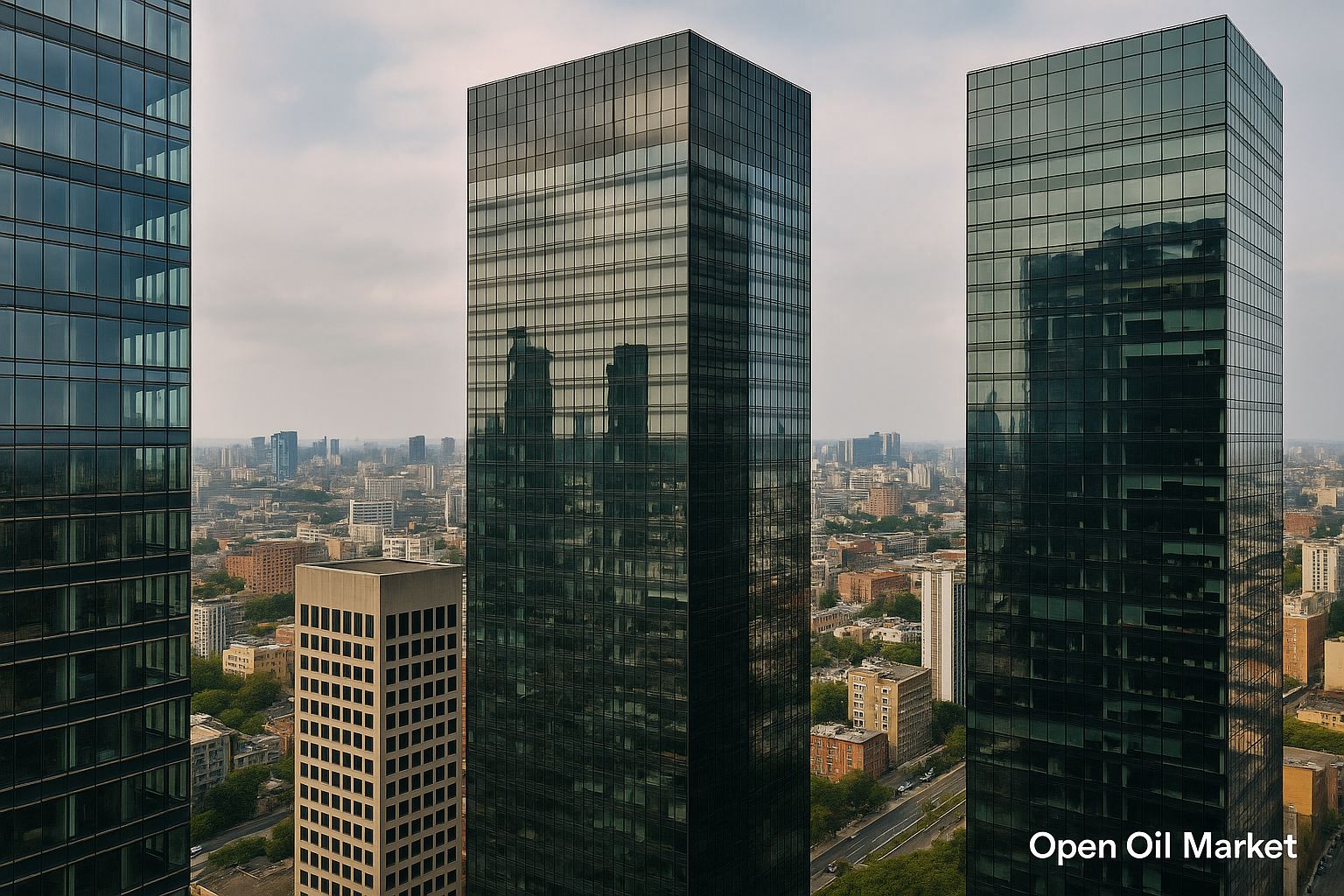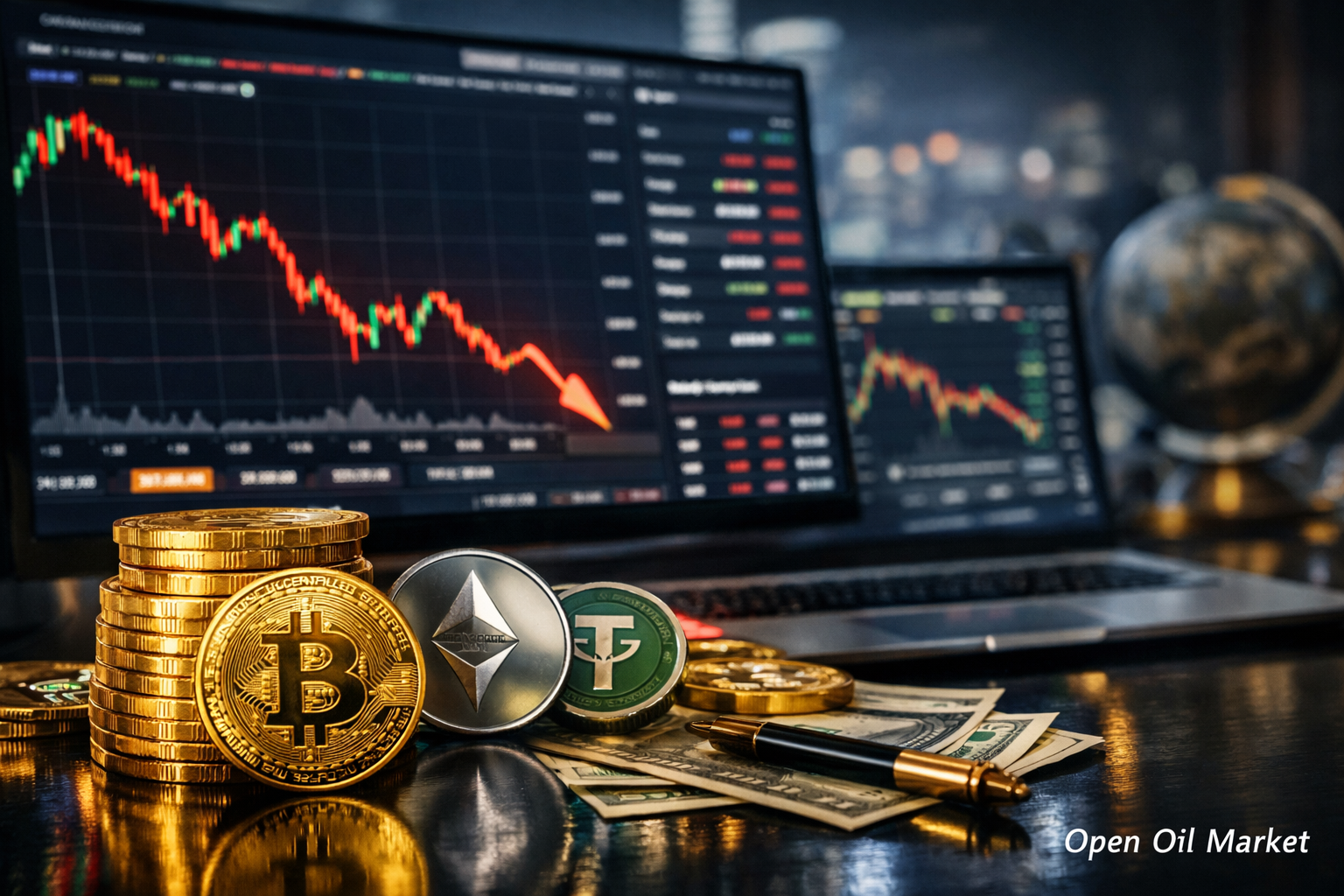
Global Startup and Venture Investment News for November 8, 2025: Record Deals in the Artificial Intelligence Sector, the Return of Mega Funds, Revival of the IPO Market, and Increased Interest in Crypto Startups. A Detailed Overview for Venture Investors and Funds.
By early November 2025, the global venture capital market continues its steady growth after several years of decline. Investors worldwide are once again actively funding technology startups—record deals are being struck, company IPO plans are back on the agenda, and the largest funds are returning to the market with substantial investments. Governments in various countries are ramping up support for innovation, eager not to lag in the global technology race. As a result, private capital is once again flowing into startup ecosystems, providing young companies with the resources necessary for accelerated growth.
Data for the third quarter of 2025 confirms the revival: the global venture investment volume for the quarter reached approximately $97 billion, which is about 38% higher than the previous year and slightly surpasses the figures from the previous quarter. This marks the best quarterly result since 2021 and continues a streak of four consecutive quarters exceeding $90 billion. Following the downturn of 2022-2023, startup funding has been steadily increasing for four reporting periods in a row, reflecting a return of investor confidence. The primary driver of growth has been mega rounds in the artificial intelligence (AI) sector; however, the revival is visible across all stages, with significant year-over-year increases in late-stage funding. Two-thirds of venture capital in the recent quarter went to U.S.-based startups, yet activity is also picking up in Europe, Asia, the Middle East, and other regions, underscoring the global nature of the upswing.
Venture activity is rising in nearly every part of the world. The U.S. remains the leader (especially with the booming AI segment). In the Middle East, investment volumes have nearly doubled over the past year; in Europe, Germany has surpassed the U.K. in total venture capital for the first time in a decade, while in Latin America, Mexico has outpaced Brazil in fundraising. India, Southeast Asia, and Gulf countries are attracting record flows of investment amid a relative downturn in China. The startup scenes in Russia and neighboring countries are striving to keep pace, despite external restrictions—new funds and initiatives are emerging to develop local ecosystems. Overall, the market is witnessing a global venture boom, even as investors remain selective and cautious.
Below are key events and trends shaping the current venture market agenda as of November 8, 2025:
- The Return of Mega Funds and Large Investors. Leading venture players are forming record funds and are once again actively investing in startups, flooding the market with capital and increasing risk appetite.
- Record Investments in AI and a New Wave of "Unicorns." Mega funding rounds are driving valuations of startups to unprecedented heights, particularly in the AI sector, resulting in the emergence of numerous new unicorns.
- The Revival of the IPO Market. Successful public listings of tech companies and new listing plans suggest that the long-anticipated "window" for exits has reopened.
- Industry Focus Diversification. Venture investments are flowing not only into AI but also into fintech, climate projects, biotechnology, aerospace, and defense developments, with renewed interest in crypto startups gradually returning.
- Consolidation Wave and M&A Activity. Significant mergers, acquisitions, and strategic deals are reshaping the industry landscape, creating new exit opportunities and accelerating growth for companies.
- Renewed Interest in Crypto Startups. After a prolonged "crypto winter," the blockchain sector is once again attracting significant investment and attention from both venture funds and large corporations.
- Local Focus: Russia and CIS Countries. New funds and programs aimed at developing local startup ecosystems are being launched in the region, gradually attracting investor attention despite sanctions and other restrictions.
The Return of Mega Funds: Big Money is Back in the Market
The largest investment funds and institutional players are triumphantly returning to the venture arena, signaling a renewed appetite for risk. After a downturn in venture fundraising from 2022 to 2024, leading VC firms are resuming capital raising and launching new mega funds, demonstrating confidence in market prospects. For example, the Japanese conglomerate SoftBank has established the Vision Fund III, with a target size of approximately $40 billion aimed at advanced technologies (focusing on AI and robotics) after a prolonged hiatus. In October, American firm Sequoia Capital announced the creation of two new funds totaling $950 million (including $750 million for late-stage investments and $200 million for seed projects). Sovereign funds from Gulf countries have also become active, directing billions into innovative companies around the globe. The emergence of such megastructures means startups will soon have even more opportunities for fundraising, as major investors prepare for another cycle of technological growth, accumulating significant capital reserves.
Record Investments in AI and a New Wave of Unicorns
The AI sector remains the primary engine of the current venture upswing, showing unprecedented funding levels. Analysts estimate that since the beginning of 2025, AI startups have raised over $160 billion in the U.S. alone, accounting for approximately two-thirds of all venture fund investments in the country. By the end of the year, global investments in AI companies may exceed $200 billion—an unprecedented milestone for the sector. The combined valuation of the top ten AI startups (including OpenAI, Anthropic, xAI, and others) has approached an astronomical $1 trillion. Investors attribute the excitement surrounding AI to its potential to radically enhance efficiency across various sectors, opening multi-trillion-dollar markets—from software automation to personal virtual assistants. Despite the risks of overheating and discussions of a potential "bubble," venture funds continue to actively invest in AI startups, eager not to miss out on the next technological revolution.
The influx of capital into AI is accompanied by the emergence of numerous new unicorns and a rising concentration of investments. A large portion of funds is directed to a limited circle of industry leaders, who are receiving the largest rounds. About 70% of all investments in American startups in recent months have gone to just a few companies that are experiencing heightened investor demand. For instance, in September, French generative AI developer Mistral AI raised around $2 billion, marking the largest round in the history of the European AI market. Even more impressively, American OpenAI managed to secure $13 billion in a single tranche—record funding that has set a new benchmark for the industry. Such gigantic deals elevate company valuations to astronomical figures. However, the overall venture market benefits from this surge: capital and talent are concentrating around promising directions, which may lead to breakthroughs in the future, even if some currently funded projects do not meet expectations.
In recent weeks, several startups have announced their large-scale investments, confirming the return of "big checks" to the market. Some notable examples include:
- Harvey (USA) — raised $150 million at an $8 billion valuation to develop a legal AI platform (lead investor: Andreessen Horowitz).
- Synthesia (UK) — $200 million at a $4 billion valuation for scaling an AI-based video generation service (round led by GV — the venture division of Alphabet).
- Fireworks AI (USA) — $250 million in a Series C round (valuation around $4 billion) to expand its AI platform capabilities in genomics and healthcare.
- Legora (Sweden) — $150 million (valuation $1.8 billion) to advance legal software with AI elements; this startup, founded in 2023, has already joined the ranks of new unicorns.
- Armis (USA) — $435 million in a pre-IPO round at a $6.1 billion valuation to strengthen the cybersecurity platform for IoT devices (round led by Goldman Sachs with participation from CapitalG).
The Revival of IPOs and Exit Prospects
Against the backdrop of rising valuations and capital influx, technology companies are once again eyeing public markets. After a lull over the past two years, there is a revival of IPOs as a genuine exit pathway for venture investors. Earlier in 2025, several unicorns successfully went public: for instance, the stablecoin issuer Circle executed a listing at a valuation of around $7 billion, while cryptocurrency exchange Bullish raised about $1.1 billion through its IPO, achieving a valuation of $5-6 billion. These debuts signaled a market appetite for new offerings, particularly in the fintech and cryptocurrency segments.
Now, major players are poised to capitalize on the newfound "window." Insider information suggests that the creator of ChatGPT, OpenAI, is considering an initial public offering as early as 2026 with a potential company valuation of up to $1 trillion—a precedent for the tech sector. In the blockchain industry, ConsenSys (known for developing the MetaMask wallet) has hired banks JPMorgan and Goldman Sachs to prepare for its IPO, scheduled for 2026. If this occurs, it will mark the first public offering of a major developer in the Ethereum ecosystem and a landmark event for the entire crypto industry.
Improved market conditions and gradually clarified regulatory requirements are also boosting the confidence of startups planning to go public. Regulators in the U.S. are easing some of the uncertainties: for example, the Securities and Exchange Commission (SEC) recently dropped claims against ConsenSys regarding its crypto services, eliminating an obstacle to its IPO. Consequently, the largest private companies are once again viewing the public market as a viable opportunity to attract capital and provide liquidity to investors. Experts predict that the number of high-profile tech IPOs will increase in the coming couple of years as the market window remains open and valuation multiples favor exit strategies.
Beyond AI: Health Care, Climate, and Space
Despite the dominance of artificial intelligence projects, substantial funds are also flowing into other high-tech sectors. Healthcare and biotechnology attracted around $15-16 billion in venture capital in the third quarter of 2025—ranking third in size after AI and IT infrastructure. A case in point for the synergy of technology and medicine is the startup Fireworks AI, which raised $250 million to develop an AI platform for genomic medicine (leveraging advancements in both AI and healthcare). Venture funds are also actively supporting climate and "green" projects. For instance, the Australian company Uluu raised 16 million Australian dollars to create biodegradable plastic from seaweed, while Indian electric vehicle component manufacturer Tsuyo Manufacturing secured 40 million rupees to expand its production. Although the sizes of these deals are not comparable to the colossal rounds in AI, they reflect sustained investor interest in sustainability and eco-technologies.
Increased attention is also being directed towards space and other hard tech fields. In Europe, the segment of private space companies is rapidly growing; for instance, Bulgarian satellite startup EnduroSat raised $104 million (with participation from Google Ventures, Lux Capital, etc.) to scale the production of small satellites—in response to global demand for affordable space communication solutions. Overall, deep tech industries are experiencing a resurgence: in 2025, major funding rounds were secured by manufacturers of robotics, semiconductor components, and quantum computing systems, collectively raising tens of billions of dollars. Although in terms of investment volume these sectors currently lag behind the AI phenomenon, the allocation of venture capital is becoming increasingly diverse—from medicine and climate solutions to space and defense technologies—supporting a broad front of technological advancement.
Consolidation and M&A: Mega Deals Reshaping the Landscape
High startup valuations and stiff competition are fueling a new wave of consolidation in the industry. Major mergers and acquisitions are once again taking center stage, reshaping the power dynamics in the market. Strategic M&A allows corporations and investors to accelerate growth, acquire new technologies, or enter adjacent markets, while large acquisitions provide much-needed exits for venture funds.
Recently, several notable deals have underscored the trend of traditional financial institutions merging with the startup world. For example, in October, investment bank Goldman Sachs announced the acquisition of venture firm Industry Ventures for nearly $1 billion. This step represents one of the largest acquisitions in the venture sector, reflecting the growing interest of bank capital in technology and startup assets. Major tech giants are also reigniting their M&A activities, capitalizing on more stable valuations: over the year, multiple industry leaders have acquired promising startups in an effort to strengthen their positions in AI, cybersecurity, and other key areas.
Consolidation is also affecting the realm of crypto technologies. Traditional financial corporations are showing interest in acquiring blockchain startups amid the sector's recovery. According to media reports, company Mastercard is exploring the possibility of acquiring several crypto projects (including infrastructure startup ZeroHash) for nearly $2 billion, demonstrating serious intentions of corporations to establish a foothold in the realm of digital assets. Overall, the uptick in mergers and acquisitions—from banking investments in venture platforms to tech mega-deals—indicates the market's "maturation." Major players are ready to expand their presence through M&A, which in turn opens up more successful exit and integration options for startups into the operations of large companies.
The Return of Interest in Crypto Startups
After a prolonged downturn during the "crypto winter," the blockchain startup market is experiencing a revival: venture investments in the crypto industry are once again on the rise. In October 2025, funding for cryptocurrency and blockchain companies significantly increased. In the first week of October alone, industry startups collectively raised over $3 billion, marking a sharp increase compared to previous months. The leading project was the American company Polymarket, which secured a record $2 billion (valuation around $9 billion) with the backing of exchange operator ICE—one of the largest venture deals of the year outside the AI sector. Following that, the financial prediction platform Kalshi raised $300 million (valuation around $5 billion), confirming the market’s willingness to invest in new fintech solutions at the intersection of traditional markets and cryptocurrencies.
Overall, infrastructure solutions for digital assets are also beginning to gain support from venture funds. For instance, American startup Hercle, which is developing infrastructure for stablecoins, received $60 million in funding. A number of other projects in the Web3 and blockchain services for businesses have also successfully closed rounds. At the same time, leading players in the crypto market are entering a new level of maturity—besides preparing for the IPO, ConsenSys, with the participation of major banks, is witnessing increased interest from institutional investors in crypto assets. Easing regulatory uncertainty in the U.S. (for example, progress in creating rules for stablecoins and approval for Bitcoin ETFs) and the engagement of traditional financial giants in funding rounds are reinforcing the return of capital to the digital technology sphere. The crypto startup sector, having undergone a cleansing of speculative projects, is gradually restoring trust and coming back into focus for venture investors.
The Local Market: Russia and CIS Countries
Despite geopolitical restrictions, efforts are being made to develop local startup ecosystems in Russia and neighboring countries. In an environment where international capital is largely inaccessible, local investors and institutions are concentrating on the domestic market. Over the past year, several new venture funds have emerged in the country—according to industry reviews, the number of active funds has increased from approximately 35 to 43. This indicates that some Russian capital, previously "locked" within the country, has begun to flow into the tech sector, spurring the formation of new investment teams and strategies. Corporate funds are emerging at large companies, and regional government funds are appearing focused on supporting innovation.
Development institutions such as the Skolkovo Foundation, Russian Venture Company (RVC), and Internet Initiatives Development Fund (IIDF) have intensified acceleration programs, contests, and grants to compensate for the lack of external financing. In 2025, new startup studios have been launched at leading universities, as well as regional venture funds supported by local authorities. However, the overall volume of venture investments in Russia remains modest against global benchmarks. Significant barriers persist: high key interest rates and economic stagnation complicate the attraction of private capital, while tech companies face restrictions accessing international markets and technologies. Nevertheless, experts note that the most resilient Russian startups continue to evolve, focusing on the domestic market and niche solutions. In the long term, the development of a local venture market—however forced—could lay the foundation for future growth when external conditions improve.
Conclusion: Cautious Optimism
Following a year of impressive deals and a recovery in investment activity within the venture market, a mood of cautious optimism prevails. On one hand, the unprecedented surge in valuations and funding volumes—particularly in the AI segment—draws parallels with the dot-com era two decades ago. The risk of a "bubble" exists, and some investors advocate for prudence, pointing to overheating in certain niches. On the other hand, many venture capitalists emphasize that such periods of excitement have positive effects as well: they consolidate enormous financial resources and talent in new industries, laying the groundwork for future technological breakthroughs. Even if some projects inevitably fail, one or two wildly successful "hits" can compensate for dozens of failures.
As we approach 2026, investors worldwide strive to find a balance between the desire not to miss the next revolutionary idea and a sober assessment of risks. One thing is clear: the startup market has significantly revived following a challenging period. New records for funding volumes are being set, high-profile IPOs are on the horizon, and venture funds are once again forming large pools of capital. At the same time, the approach has become more selective—capital is primarily directed towards the most promising companies and sectors. The principal intrigue remains whether high expectations regarding the AI boom will be justified and whether other sectors can close the gap in fundraising. For now, the appetite for innovation remains strong: both startups and investors are looking to the future with restrained yet unmistakable enthusiasm.




